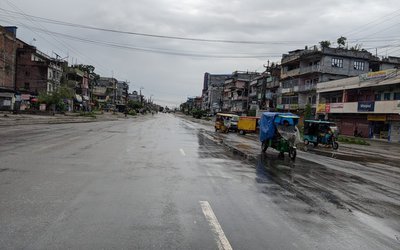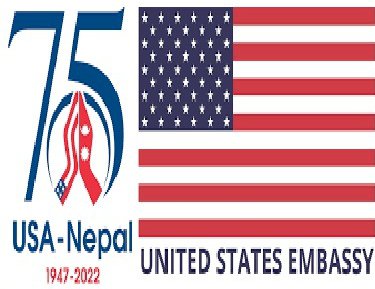
“This year marks the 75th year of diplomatic relations between the United States and Nepal. Throughout these 75 years – and through the decades of change that have occurred in both of our countries – the United States and Nepal have stood with one another,” said Randy Berry, the US Ambassador to Nepal in his statement issued on the 75th Anniversary of Diplomatic Relations between the United States and Nepal.
In a statement issued on the occasion of the Constitution Day of Nepal last year, the US Secretary of State Antony Blinken has congratulated the Government and the people of Nepal on behalf of the US government and people, recalling the collaboration between the two countries in the past years in facing up the common challenges.
US Secretary of State Blinken has also recently said the 75-year friendly relations between the United States of America and Nepal have been made stronger by the people's cordiality.
He has also stated that the two countries worked together in the fight against the coronavirus pandemic and climate change. Blinken has also extended best wishes to all the Nepalis on this occasion.
These statements rightly portray the existing warm relations between the two countries including at people to people level. Just last week, while welcoming US Congressional delegation Prime Minister Sher Bahadur Deuba and foreign minister Dr. Narayan Khadka echoed the importance of Nepal’s relations with the United States.
Like the recent visit of US Congressional, High-level visits have served to further cement the bilateral relations between Nepal and the US. Prominent visits to Nepal from the US include high dignitaries of various government agencies including the recent visit by the Congressional delegation.
“The visit by the U.S. Congressional delegates was a great success and included conversations on issues such as human rights, the climate crisis, and democracy. We'll continue to build on these discussions moving forward as the U.S. – Nepal relationship continues to strengthen,” writes US Embassy on its Facebook Page.
As Nepal US celebrates 75 years of official U.S.-Nepal diplomatic ties, the U.S. Congressional delegation led by Kirsten Gillibrand and including Senators Sheldon Whitehouse, Cory Booker, Mark Kelly, & Representative Mondaire Jones to Kathmandu visited Nepal.
“The Congressional delegation led by Senator Kirsten Gillibrand met with Prime Minister Sher Bahadur Deuba as part of their 3-day visit to Nepal. Senators Sheldon Whitehouse, Cory Booker, Representative Mondaire Jones, and Ambassador Randy Berry joined the meeting and reflected on the broad U.S. – Nepal relationship. They discussed ways to further bolster ties, including by addressing the climate crisis and strengthening democratic resilience,” tweets ambassador Berry.
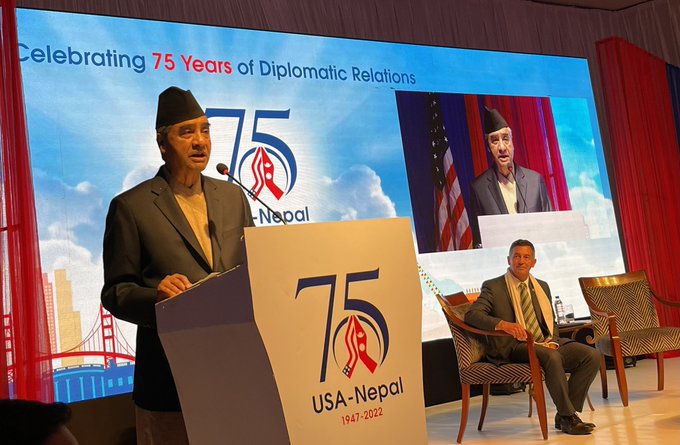
“The Congressional delegation led by Senator Kirsten Gillibrand met with @PM_nepal_Sher Bahadur Deuba as part of their 3-day visit to Nepal. They discussed ways to further bolster ties, including by addressing the climate crisis & strengthening democratic resilience. #USNepal75,” tweets ambassador Randy Berry.
Earlier Deputy Assistant Secretary Kelly Keiderling also visited Nepal. During her second visit, she met young Nepali leaders and influencers, including International Women of Courage Award winner Bhumika Shrestha, technopreneurs from Leapfrog Technologies, alumni of U.S. government exchange programs, and representatives from the Nepal-America Chamber of Commerce.
She also traveled to Lumbini to experience its rich history and met with local business, student, and civil society communities, seeking to advance U.S. - Nepali friendship outside of the Kathmandu Valley. Deputy Assistant Secretary met with Buddhist monks and nuns learning English, women tourism entrepreneurs, and students at Lumbini Buddhist University.
Nepal’s Priority
Over the last seven and half decades, Nepal’s political system has changed from an autocratic Rana regime to a constitutional monarchy and now the Federal Republic. However, Nepalese states and leaders give high importance to their relations with the United States.
Prime Minister Sher Bahadur Deuba in his last visit to UNFCCC Conference in the Glasgow United Kingdom briefly interacted with US President Joe Biden.
Nepal always gives equal importance to its relations with the United States. “Pleased to welcome US Congressional delegation led by Senator @SenGillibrand and exchange views on Nepal-US friendship and ways for enhancing multifaceted partnership involving governments, parliaments and people in general. Discussed global issues such as climate change,” tweeted Prime Minister Sher Bahadur Deuba.
“Foreign minister Dr. Narayan Khadka received US Congressional delegation led by @SenGillibrand. The two sides exchanged views on expanding cooperation in various areas, including economic development. Views were also shared on areas of common interest at bilateral & multilateral levels,” tweeted the Ministry of Foreign Affairs.
Since the establishment of diplomatic relations between the two countries, Nepal has been receiving all kinds of support from the United States of America for its all-around development. As the second country after England to back Nepal’s independence and sovereignty by establishing diplomatic relations with Nepal, the United States has been firmly supporting Nepal’s independence and sovereignty.
Realizing the importance of the establishment of diplomatic relations with the US for future generations, then prime minister Padma Samsher Rana directed Nepal’s mission head to New Delhi Daman Shamsher Jang Bahadur Rana to contact with US Mission in New Delhi. Rana described in detail about moves taken to build the formal contact in his book Nepal Rule and Misrule.
As Nepal and United States are celebrating 75 years of establishment of diplomatic relations, Nepal’s relations with the United States of America is more important and valuable for Nepal’s development and protection of independence.
When Nepal and the United States of America established the diplomatic relations on 25 April 1947, then prime minister Padma Sumsher Rana directed Nepal’s mission head in New Delhi Daman Samsher Rana to make all efforts to establish diplomatic relations with the United States of America to pursue that this relation would be highly valuable in the future when the shape of South Asia change.
Thus, Prime Minister Padma Sumsher Rana signed the agreement with the US making it the second country, only after the UK, with which Nepal established diplomatic relations. Daman Shamsher Jang Bahadur Rana mentioned the events in his book Nepal Rule and Misrules.
Then, Prime Minister Padma Sumsher Rana remarked that the establishment of diplomatic relations with U.S is ‘important” for Nepal. As Nepal and U.S are celebrating 70 years of establishment of relations, it is still important. In his book, Rule and Misrule of Rana, Daman Samsher Jang Bahadur Rana described the period when Nepal established diplomatic relations with the U.S was so important for Nepal’s relations’
After the establishment of the Nepalese Embassy in Washington D.C. on 3 February 1958, American Embassy in Kathmandu was opened on 6 August 1959. As the relations deepen, a number of Nepal’s honorary consuls have been appointed in various US cities.
“His Majesty wanted the USA to have a residential embassy in Kathmandu. Since the beginning of 1957, His Majesty had been pressing me to convince U.S. Ambassador in New Delhi. He used to say that as soon as Americans have their embassy in Kathmandu, Chinese will also have one in no time,” writes Rana.
“Nepal’s relationship with the USA started when Babbar Shumsher JB Rana led a mission to the USA and signed a Treaty of Friendship and Co-operation in 1947. Following this Henry Grady was representative for two months in early 1948. Later in mid-1948, an American Mission led by Henderson arrived in Nepal and an exchange of Ambassadors between the two countries took place. Henderson, US Ambassador in India was concurrently credited to Nepal. Kaiser SJB Rana, the Representative to the Court of St. James in the UK became also Nepal’s representative to the USA. Following this, USOM’s anti-Malarial Program in Nepal started in Nov. 1952 leading to the resettlement of many hill people in the Terai,” writes Hemang Dixit in his article in New Spotlight.
MCC and Nepal
After facing several years of delay and disruptions through a fake campaign, ratified the Millennium Challenge Corporation Compact (MCC) stalled for years.
After eleven years of its inception in Nepal, the House of Representatives of the Federal Parliament has, at last, ratified the Millennium Challenge Corporation Compact.
With this development, the implementation of the 500 million dollar Compact will now proceed. The compact was endorsed by the ruling coalition parties amid obstructions by the main opposition party, CPN-UML, in the lower House. Under this project, 500 kilometers long 400-kV transmission line and a section of road will be constructed.
By taking a strong political initiative, prime minister Sher Bahadur Deuba passed the MCC agreement with the U.S. preventing major diplomatic disasters with Nepal’s important friend.
Henry Kissinger, a renowned American scholar of geopolitics, in his book World Order writes,” For centuries Nepal skillfully balanced its diplomatic postures between the ruling dynasties in China and those of India. Like his predecessor, PM Deuba also plays the same role.
USAID’s Contributions
Over the decades, many things have changed globally. From self-isolation, Nepal has opened its door outside world. From a most backward country with less than one percent literacy, high l infant mortality and maternal mortality, no public transport, health posts, roads and other basic facilities, Nepal, though it is still in the process of complete transformation, is a state with all basic infrastructures.
By signing the Point IV agreement for Technical Cooperation on January 23, 1951, the present USAID (originally known as the U.S. Operations Mission (USOM) became the first bilateral donor financing Nepal’s economic development programs.
Since the start of aid to Nepal, USAID’s objective to support Nepal remains more or less the same focusing its programs aim to promote economic development for the prosperity of the life of Nepali people. This entire program advances human freedom, and secures the growth of a democratic way of life and the development of international understanding and goodwill.
During the last 75 years, the nature of America’s cooperation has also changed. From the early days of Malaria eradication in Terai, roads, bridges and building basic infrastructures, the USAID has been supporting livelihood improvement, market integration with the rural community, disaster resilience and capacity building programs.
In her recent visit, Deputy Assistant Secretary Keiderling and USAID Nepal Mission Director Sepideh Kevans had met with women from the Tamang community, who are leading the movement toward commercial agriculture in Nepal.
USAID - US Agency for International Development partnered with Nepal’s private sector to provide these women with new markets for their vegetables. As a result, the women have increased their incomes and improved their livelihoods while making healthy food more widely available to their community.
Providing all its generous support to Nepal’s modernization process through institutions building at all sector and at all levels, the United States stands as a pillar in the all-around development of Nepal. U. S. has been providing financial and technical assistance to build administrative units, health, schools, agriculture, higher education and connectivity.
Diplomats Contributions
Since his arrival in Nepal in 2019, US Ambassador to Nepal Randy Berry, who also worked in Nepal as deputy chief of the mission earlier in his carrier, has been spending a lot of time to meeting people in rural and remote parts of Nepal, learning about their livelihood and sharing views with them.
Ambassador Berry has traveled to eastern, western and central parts of Nepal. On following her Twitter page, one can see how strongly she feels about
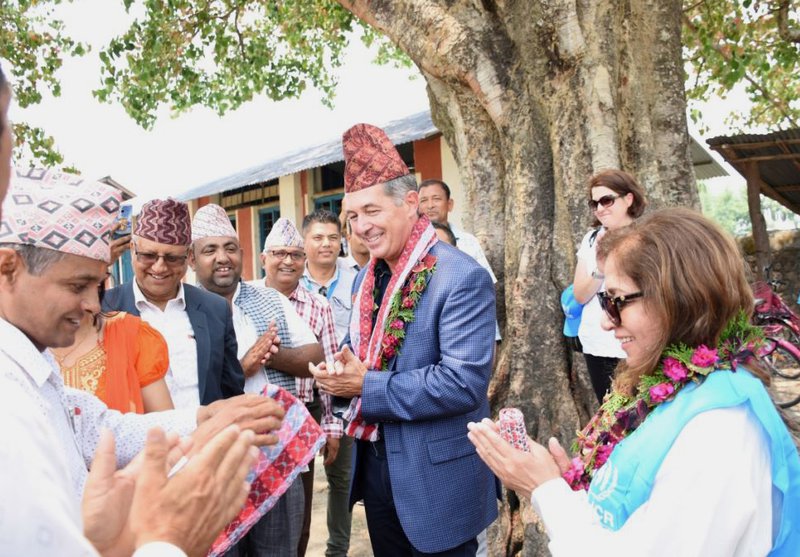
inspiring Nepal’s rural folks.
Ambassador Berry's tweets from different regions show his inner love for the people, culture, festivals and the natural paradise of Nepal.
Diplomats come and go. For many American diplomats, the nature, culture and simplicity of Nepalese rural folks have attracted so much. Former ambassadors Michael Malinowski, Nancy Powell and Peter Bodde served in Nepal as the U.S, Mission in different capacities and still maintain their relations even after retirement. Similarly, Alaina B. Teplitz, who is now the Assistant Secretary of State for Administration, had also intensively traveled to Nepal.
Ambassador Scott Delisi who spent two years as an ambassador is now supporting people living in remote parts of Nepalese through a charity. Nepal and Nepalese people have already always attracted them.
People to People
Along with state-to-state support, people to people support has also been so much closer and more intimate. Nepal’s modern history will be incomplete without the contribution of people like LF Stiller, an American Jesuit who later took Nepali citizenship.
Former Peace Corps volunteer late Scoot Skinner, a resident of Vermont, came to Nepal in 1964 and never forgot the smile of the people and mountains, visiting Nepal several times later with his family members till his death in 2021.
For common American Citizens, Nepal attracted so much that they even gave up American citizenship and became Nepali. There will be a long list of Americans who served in Nepal.
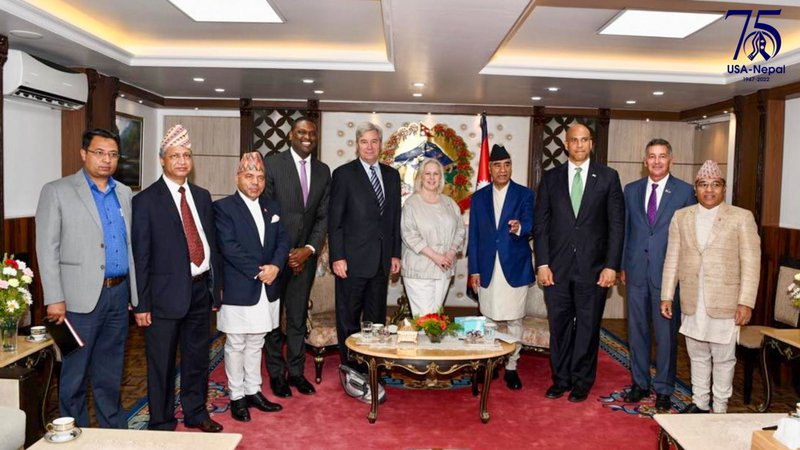
Born in the US in 1928, Fr. Ludwig F. Stiller came to Nepal in 1956 as a Jesuit at St Xavier School and became a Nepali. Stiller came a Jesuit but when he died in 2009 he became a prominent historian of Nepal. Without his contributions, Nepalese would have been poorer in their knowledge of the history of Nepal, particularly the era of nation-building of King Prithvi Narayan Shah and the court massacre.
Stiller was not the only one of his kind. Other America born Jesuits, who came to Nepal to teach at schools, devoted their life for the betterment of Nepal. Another prominent scholar late Leo E. Rose revealed so many things about Nepal. His book Strategy for Survival is regarded as a masterpiece in Nepal. Like Stiller, there are many other Americans including Leo Rose and others who have made enormous contributions to Nepal.
Coming as a visitor, Judith Chase and her husband have been living in Nepal for quite a long time teaching Nepalese how to grow organic products. “US citizens love Nepal from their heart,” said the Deputy Chief of the Mission Michael C. Gonzales in a recent program organized by Nepal USA Chamber of Commerce and Industry.
Even world-renowned American scholars like scholars from America like Samuel P. Huntington, Henry Kissinger, Francis G. Hutchins, and teachers of late King Birendra, mentioned Nepal’s position in their books. It indicates that Nepal is in the minds of American scholars.
Other scholars from the United States, who have been contributing to politics, anthropology and other contemporary issues, have made great contributions to bringing Nepal into the international arena. Professor of Harvard University Francis G. Hutchins, a former teacher of late King Birendra, book Democratizing Monarch
These are among a few renowned persons. There are hundreds of Americans who contributed to strengthening the relations between the two countries by supporting Nepal’s development efforts.
Peace Corps
Nepal-U.S. relations are not only limited to the level of scholars, PEACE CORPS NEPAL has taken the relations to the inner depth of the rural parts of the society. Many Peace Corps volunteers, who served in Nepal working as unpaid ambassadors, have been lobbying for Nepal’s cause. Many Peace Corps volunteers come and go, but some other Peace Corps volunteers have even stayed in Nepal as permanent residents.
Peace Corps commemorated the 55th anniversary of Peace Corps’ arrival in Nepal last week. According to Peace Corps, over 3,750 American volunteers who lived, worked and served in communities throughout Nepal since 1962.
Fifty-four Peace Corps Volunteers currently serve in Nepal, supporting food security in rural communities in eight districts of the Western and Mid-Western Development Regions.
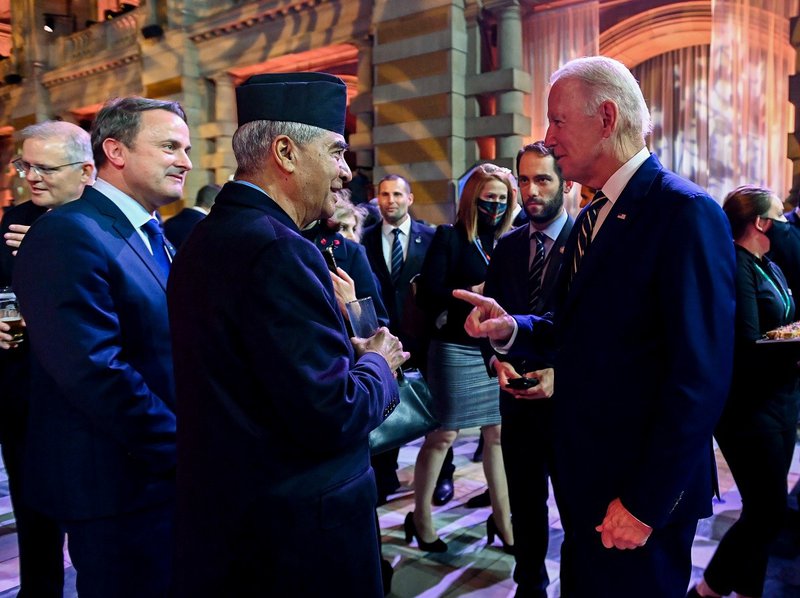
According to a Peace Corps Online, the Independent News Forum serving Returned Peace Corps Volunteers, many Peace Corps volunteers who worked in Nepal, returned later for time being to support Nepal’s development efforts.
Support To Disaster Resilience Programs
USAID is now the leading agency supporting Nepal’s disaster resilience-related programs. Along with the capacity building of security agencies including the Nepal Army and Nepal Armed Police, USAID has been supporting the central government, provinces and local level, NGOs and the community providing material and capacity-building support.
Nepal received huge support from the US following the April 25, 2015, earthquake in Nepal saving the life of hundreds of people. In a rescue operation, six US marines sacrificed their lives in a helicopter crash. After the earthquake, the United States committed to aiding Nepal’s recovery and reconstruction.
USAID is now supporting the capacity building of the National Disaster Risk Reduction and Management Authority (NDRRMA), which is a leading national agency responsible for disaster management.
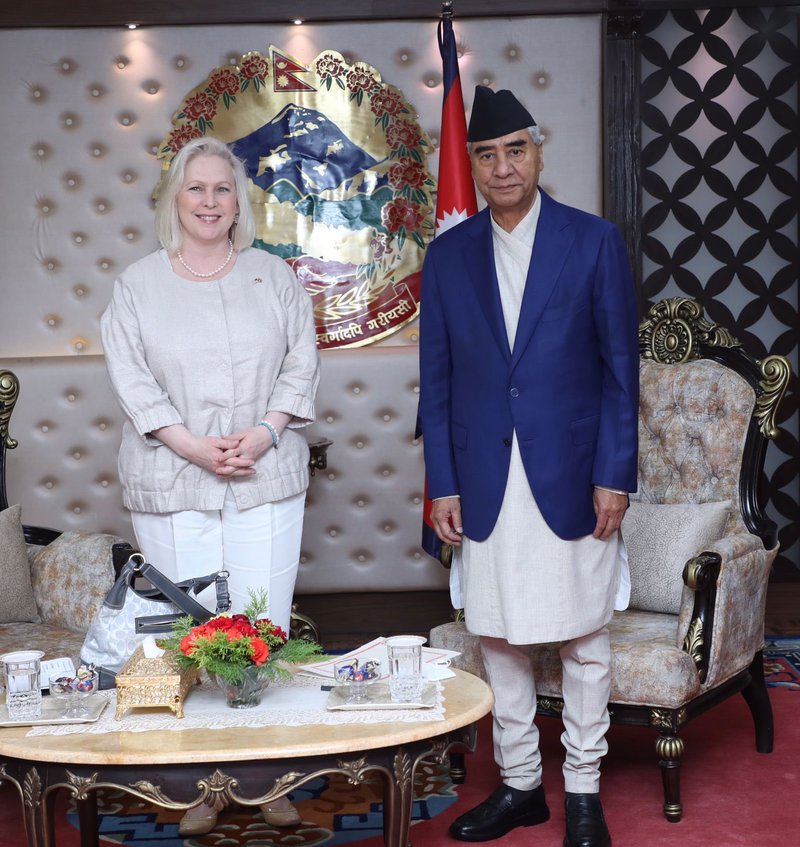
U.S. Assistance For Transformation
When US started its development assistance to Nepal in 1951, Terai was plagued by malaria, there were 800 primary students, many people had to walk several days to reach the near the road, and life expectancy was 28 years. According to Half-a-century of Development, the History of U.S. Assistance to Nepal, one out of 5 children born did not live to celebrate its first birthday.
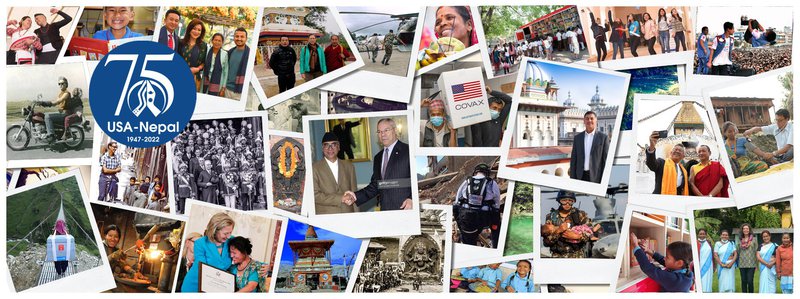
According to a website of USAID website, USAID’s efforts support Nepal’s continued development into a self-reliant and resilient partner with the aim of bolstering the security and economic prosperity of both the United States and the region. USAID remains the leading international donor agency in health and education in Nepal, creating a healthier population through strengthening Nepal Government’s health systems and improving early grade reading skills for primary school students by delivering assistance to school systems nationwide.
“To improve Nepal’s economic situation, the MCC signed, in 2017, a $500 million Compact with Nepal to expand Nepal’s electricity transmission infrastructure and improve its road maintenance regime. The Nepali government has committed another $130 million for a program total of $630 million. The Compact will build 300 kilometers (km) of high-voltage electric transmission lines, three substations, perform enhanced road maintenance on 305 km of strategic highways, and provide technical assistance to the national electric utility, the new electricity regulator, and the Department of Roads,” writes website.
“United States is a major partner in Nepal's development. With a large number of Nepalese Diaspora living in the United States, the relations are very strong at people to people level. Nepal can get a lot of benefits from the US,” said Dr. Shanker Sharma, Nepalese ambassador to India and former Nepalese ambassador to United States of America. “As Nepal and United States have been celebrating 75 years of establishment of diplomatic relations, this is the time to make our relations stronger in coming years.”
Nepal Government is grateful to US government for its humanitarian assistance and partnership in Nepal's development. Nepal and US had long friendly and cordial relations,” said former Nepalese ambassador to United States Dr.Yubaraj Khatiwada.
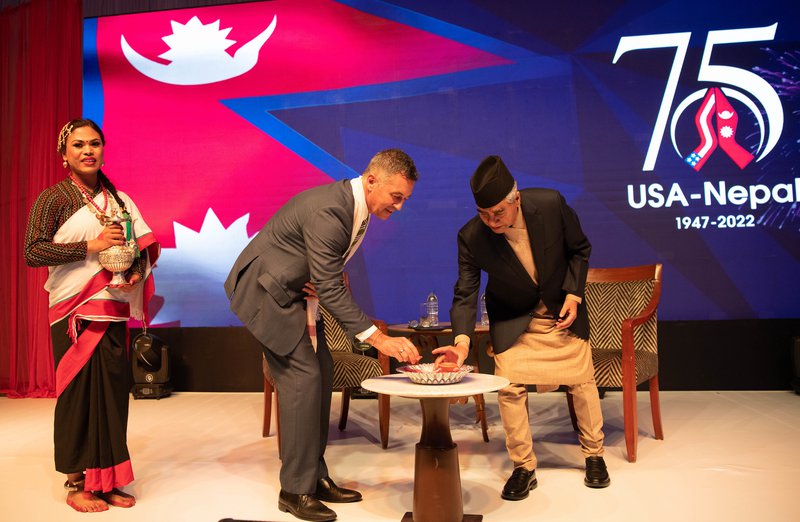
Bilateral relations
In the last 74 years, the relationship has taken on different characters mostly in response to the end of the Cold War, Nepal’s internal political changes, and at times to its changing relationship with the South Asian region, especially vis-a-vis India.
However, regardless of these factors, the relationship between Nepal and America is getting stronger particularly owing to the growing Nepalese Diaspora in the US and the growing US commitment in Nepal’s development. This friendship will continue to grow in the future.
“Nepal was one of the first countries in South Asia to receive U.S. aid. As in other countries, the U. S. used aid as an instrument of its foreign policy in Nepal in the Cold War period. The major foreign policy objectives of the United States in Nepal were a) to help Nepal maintain its independence and neutrality, b) to contain a possible threat of communism in Nepal, c) to support Nepal's development efforts, and d) to enhance Nepal's western orientation. This paper has three main objectives, to examine the fundamental objectives of the U. S. aid in Nepal in the Cold War period, to assess the major achievements of the U. S. aid objectives, and to draw conclusions on the future directions of its aid. The paper uses an analytical approach using secondary sources of information,” said Dr. Narayan Khadka in his article published in
For the last 75 years, many things have changed at the global levels and country level. Established diplomatic relations during the autocratic Rana rule and Nepal as republic state, what has not changed is Nepal’s cordial and friendly relationship with the United States.
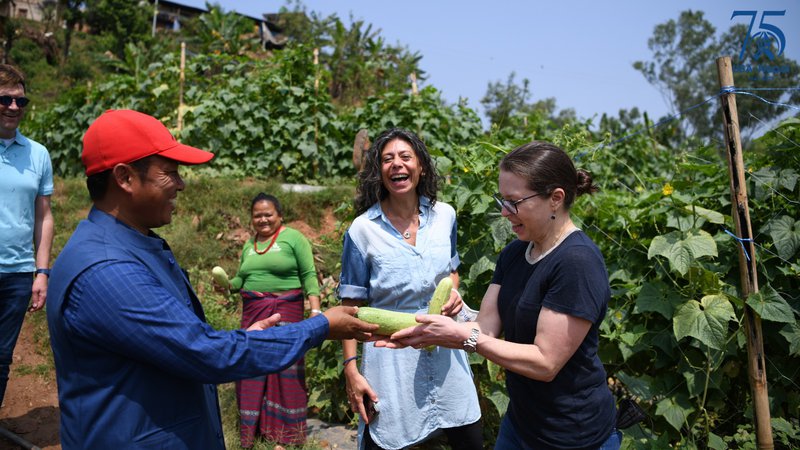

Keshab Poudel
Poudel is the editor of New Spotlight Magazine.
- ERC Nepal Is Focused On Expanding Distribution And Transmission To The Private Sector: ERC Chair Dr. Dhital
- Jul 06, 2025
- FOURTH PROFESSOR Y.N. KHANAL LECTURE: Nepal-China Relations
- Jun 23, 2025
- Colonel JP CROSS: Centenary Birthday
- Jun 23, 2025
- BEEN: Retrofitted For Green
- May 28, 2025
- GGGI has been promoting green growth in Nepal for a decade: Dr. Malle Fofana
- May 21, 2025











